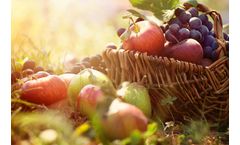Fruit Control Articles & Analysis
13 articles found
The difference in experiencing eating well-ripened fruits or under/over-ripe specimens is so dramatic that perceived ripeness has a strong influence on consumer purchasing behaviour and the probability of them purchasing a fruit.1 As there may be a significant time period between fruit picking and its arrival on the supermarket shelf, it is ...
The difference in experiencing eating well-ripened fruits or under/over-ripe specimens is so dramatic that perceived ripeness has a strong influence on consumer purchasing behaviour and the probability of them purchasing a fruit.1 As there may be a significant time period between fruit picking and its arrival on the supermarket shelf, it is ...
The treatments included in the test (each of 3 repetitions of approximately 70 fruits) were: Control (normal chilling) Delay in refrigeration (10ºC for 48 h before being transferred to 0.5ºC) Controlled atmosphere (CA) (2.5% O2 and 2% CO2) Controlled atmosphere combined with refrigeration delay (10ºC for 48 h ...
Citrus fruit exhibit low levels of ethylene production and are classified as non-climacteric fruit. ...
In line with this philosophy, Le Verger de la Blottière has been using Bioconservation solutions to remove ethylene for many years. Apples and pears are fruits that produce significant amounts of ethylene. Ethylene is known as the ripening hormone, because it regulates all processes associated with fruits’ ripening and senescence. It is a natural ...
It can be stored for up to 9 months in controlled atmosphere conditions in refrigeration chambers, a period in which the effect of ethylene on the fruit can lead to a major loss of quality. ...
It can be stored for up to 9 months in controlled atmosphere conditions in refrigeration chambers, a period in which the effect of ethylene on the fruit can lead to a major loss of quality. ...
Apple and pear fruits stored at low temperatures may suffer from chilling injury symptoms, caused by oxidative stress. Application of a low-oxygen (LO 2 ) atmosphere (0.5%) for 10 d at 20°C or 500 ppb 1-methylcyclopropene (1-MCP) at 20°C for 24 h, prior to cold storage at 0°C, were equally effective in reducing superficial scald on ‘Granny Smith’ apples, after six months of ...
No packed and MA packed also were studied before fruit stored at 5°C and 80% RH. Combining hot water and chemical treatments with MAP had greater effect on control of fruit decay, reduction of chilling injury and also to extend fruit shelf life than individual application of each treatment. Shelf life roughly doubled in ...
This study was conducted with the aim to identify causes of mechanical defects in banana fruit supply chain in Zimbabwe and to also establish critical control points at which incidence of the mechanical fruit defects can be minimised in the chain. ...
Practical applicability of the essential oils was observed in control of stem end rot of mango fruits (Dasheri and Langra variety) caused by B. theobromae during storage. Geranium, mint, palmarosa and thyme oils treated fruits showed enhancement of shelf storage life from five to ten days for both the respective varieties. Thus, the oils could be ...
It can also be applied to prevent food losses after harvesting, to delay the ripening and ageing of fruits and vegetables, to control sprouting and germination, and to extend the shelf life of perishable foods. ...
Flesh firmness, soluble solids content, titratable acidity, pH, weight loss and ethylene emission were determined on treated and untreated (controls) fruit. Application of putrescine resulted in a reduction in ethylene production as well as increase in fruit flesh firmness. Soluble solids content and pH declined, but titratable acidity was higher ...




